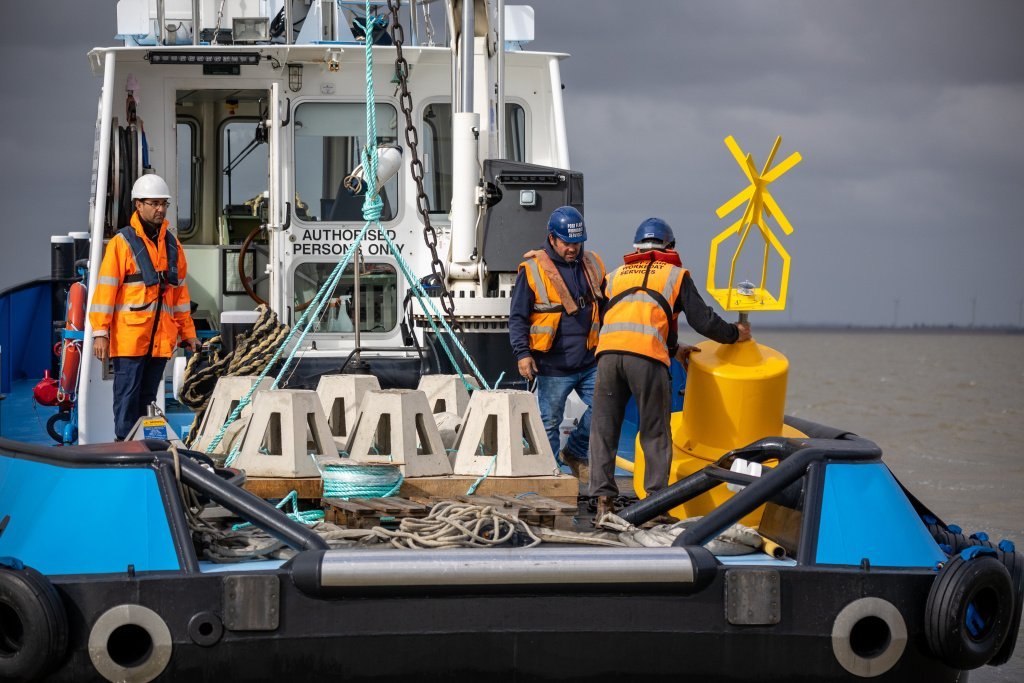Eco Reef Deployment
Exciting news!
Last week we deployed our novel eco reef units in the River Crouch estuary in proximity of the Gunfleet Sands Offshore Windfarm, off the coast of Essex. With the help of Port flair, we deployed our custom made, mattress like frame, in the subtidal Crouch estuary at a depth of around 5m.
This deployment will form part of a trial to study the effectiveness of our eco reef units, made using our GeoBlock technology®, to encourage marine colonisation and reduce sediment scour and water turbulence, with future use envisioned for biologically enhanced scour protection units for the base of wind turbine monopiles
and cabling routes.
This project has been a year in the making and first involved designing and producing our eco reef units, which consist of sphere and hexagon shaped morphologies.
Using our Greening the grey technology® we inset heterogenous surface textures and crevices to encourage initial biofilm colonisation and sheltering of marine organisms. With the hope that we will see a succession of trophic stages.
After production of the units, ¼ scale models were 3D printed and tested in laboratory-based scour studies using the flume tank at the University of Southampton.
These laboratory studies found that our units reach an equilibrium within the hydromorphological system over short time periods and reduce scour in the long term.
With these encouraging results we decided to test and verify these in-situ and designed our physical trial, with our full-scale units.
As with conventional windfarm scour protection, our deployment methodology was designed with ease of deployment and retrieval at its centre. This was achieved by tying our units onto a custom-built oak frame. Alongside our units, we also attached conventional rock used for scour protection as well as a multitude of different types of plastic to provide a comparison how the different surfaces behave.
We expect that by testing a multitude of different materials clear differences in colonisation and scour will be seen.
Over the next year we will collect a whole range of data, from multibeam bathymetry to study the changes in sediment morphology and scour, benthic community analysis, species richness and diversity studies as well as numerous chemical analyses. This data will build upon the baseline data we collected during deployment and in 12 months’ time will help inform us of the effectiveness of our units in real life scenario.
If you want to find out more about our research projects or our services we offer, such as bathymetry, consultancy and water sampling, then visit our YouTube channel and Twitter.


